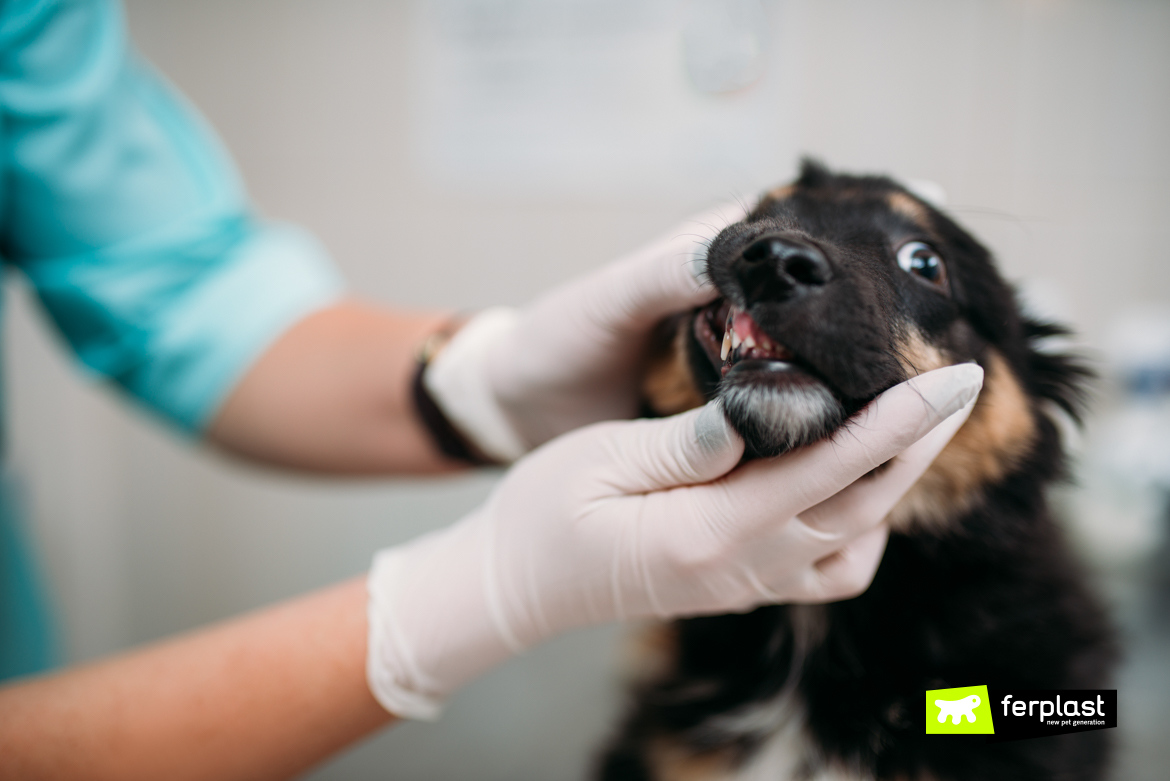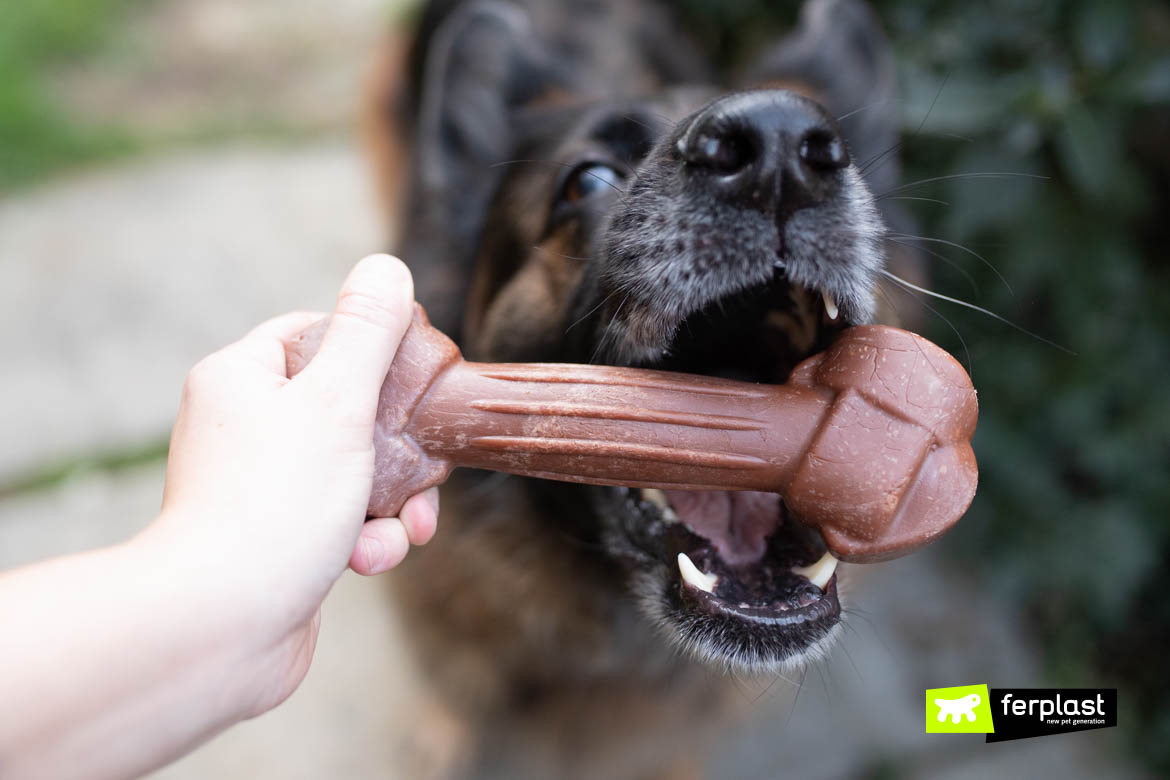Oral hygiene and proper care of a dog’s teeth are fundamental aspects of his well-being. Unfortunately, however, not all pet parents know the importance of oral hygiene for their puppy.
At times, many oral diseases can worsen into serious illnesses that can even dangerously affect the liver, kidneys, heart and even the lungs.
How to assess a dog’s dental health
To assess a dog’s dental health, it is necessary to look at the teeth and at the colour and the appearance of the gums. If they are moist, soft, smooth and without protuberances or wrinkled areas, there is no need to worry.
However, there are some colourings that serve as warning signs:
– White gums: it means that the dog may be suffering from anaemia or intoxication;
– Deep red gums: it could mean that the dog has suffered a heatstroke. It is therefore necessary to hydrate him with fresh water;
– Yellow gums: the animal may be suffering from jaundice. This is not a serious condition but it must be kept under control with the support of the vet;
– Pale or faded gums: could indicate internal bleeding, low blood pressure or even wounds;
– Blue gums: could indicate a very dangerous condition for the dog such as a lack of oxygen in the blood that could cause a stroke or an aneurysm.
On the other hand, for dogs of certain breeds the gums and tongue may always be coloured dark red with the presence of black spots. In this case there is no cause for alarm, but it is an entirely natural pigmentation phenomenon.

Pathologies
In addition to the sudden appearance of dark spots, other symptoms may also occur, such as:
– bad breath
– tooth loss
– fever
– lack of appetite
– inflammation.
However, gums may also be dark due to certain diseases, such as:
– Periodontitis, over time, this disease can lead to darkening of the gums due to poor blood circulation;
– Periodontal cancer, any abnormal growth of the periodontal level compromises blood irrigation and the lack of oxygen will lead to darkening of the gums;
– Acanthosis nigricans, a dermatological disease that causes hyperpigmentation (often seen in Dachshunds).
How to ensure good dental health for your dog
Data states that 80% of dogs suffer from dental problems from the age of three. The risk is especially present in small dogs. Regular debridement, meaning a deep cleaning to remove plaque and tartar from the surface of the teeth, is therefore necessary.
Nowadays, there are also products that are designed precisely to take care of our pet’s mouth. Toothpastes are an example of this as they contain soothing molecules and are 100 per cent plant based. In combination with toothpaste, there are also toothbrushes, such as Ferplast’s GRO 5939, which is ideal for your dog’s mouth as its long handle allows you to reach even the innermost teeth. In addition to these, chewing toys such as GoodBite Natural Sticks is also ideal for ensuring optimum dental health. They are designed to reduce tartar build-up and strengthen their teeth.

In conclusion, here is everything you need to know about your dog’s dental health. It is essential to pay attention to these small aspects on a daily basis in order to best protect your pet.



